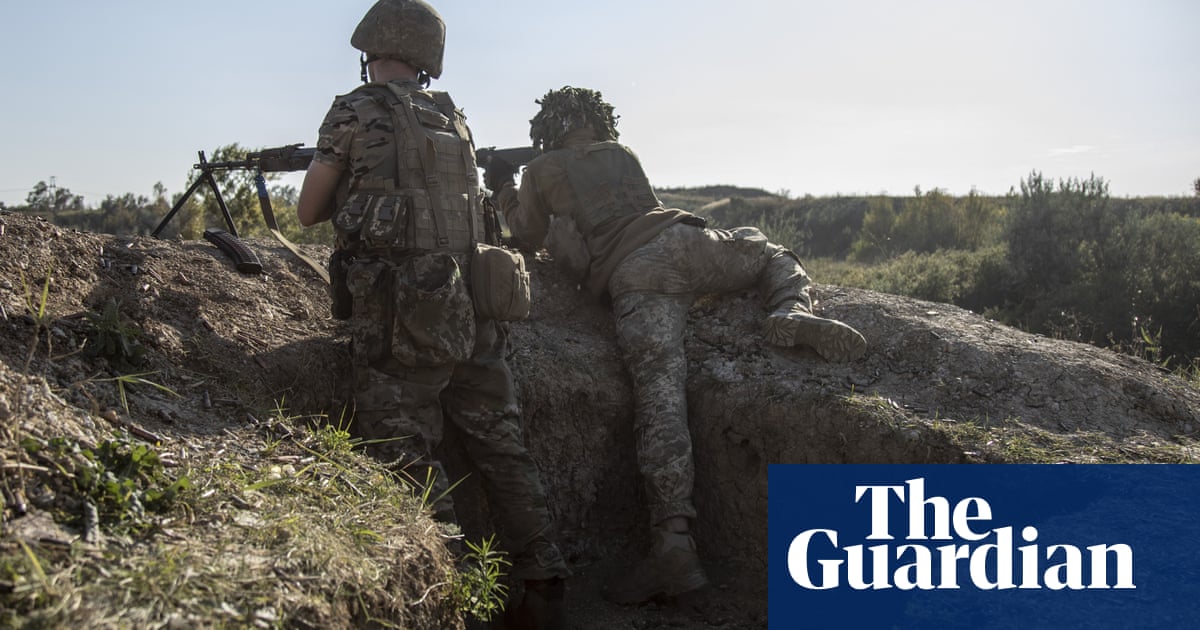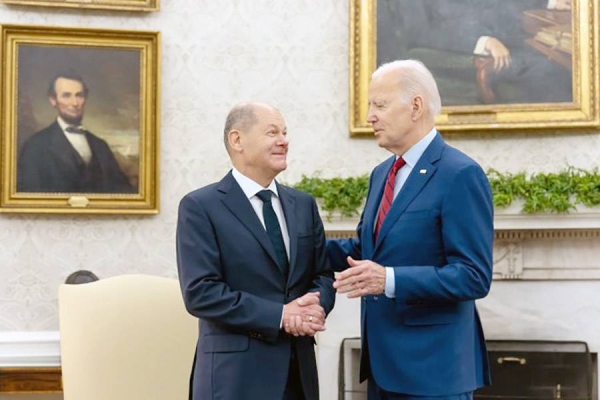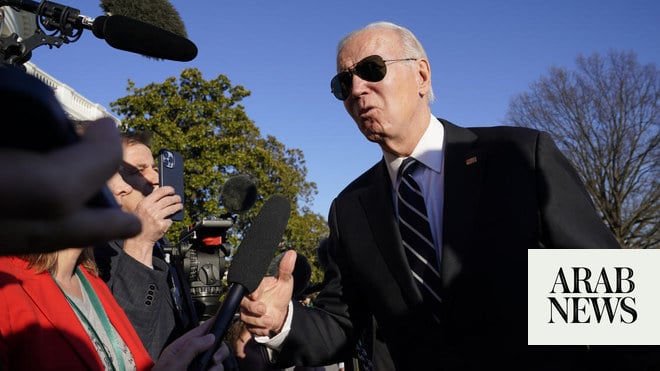
Joe Biden will deploy more than 3,000 US troops in Germany, Poland and Romania, as Russia continues to build up its forces around Ukraine, and after talks between Washington and Moscow failed to ease tensions.
The US is sending 1,700 troops from the 82nd Airborne Division to Poland, a headquarters unit of about 300 from the 18th Airborne Corps will move to Germany and a 1,000-strong armoured unit is being transferred from Germany to Romania.
“This force is designed to deter aggression and enhance our defensive capabilities in frontline allied states. We expect them to move in coming days,” said John Kirby, the Pentagon spokesperson.
The Russian president, Vladimir Putin, “continues to add forces, combined arms, offensive capabilities, even over just the last 24 hours he continues to add in western Russia and Belarus, and in the Mediterranean and the north Atlantic”, Kirby added. “He has shown no signs of being interested or willing to de-escalate the tensions.”
The Pentagon spokesperson said the deployments were separate from the 8,500 troops in the US that were put on heightened alert to be ready to deploy at short notice. Those forces are mostly earmarked to be part of a Nato Response Force (NRF) intended to bolster the alliance’s eastern flank in the face of a potential Russian attack on Ukraine.
Kirby said the troops being deployed in the coming days were being sent under bilateral agreements with the host countries.
Nato has so far not taken the decision to activate the NRF, which would require the agreement of its 30 member states, including Hungary, whose prime minister, Viktor Orbán, visited Moscow on Tuesday to offer support for Putin and said sanctions on Russia were “doomed to failure”.
European diplomats, however, said that German caution in responding to the crisis was more an obstacle to a rapid activation of the NRF than Hungarian obstructionism.
“Trying to get this done through Nato could take weeks and would only expose all the internal differences” one diplomat said.
The vanguard of the NRF has been under French command since January and its core is a 3,500-strong Franco-German brigade. The Nato secretary general, Jens Stoltenberg, welcomed the US deployments and said the alliance could take similar steps to bolster its eastern flank.
“We have increased the readiness of the Nato Response Force, and we are considering the deployment of additional battlegroups to the south-eastern part of the alliance,” Stoltenberg said. “Our deployments are defensive and proportional, and send the clear message that Nato will do whatever is necessary to protect and defend all allies.”
Biden and Stoltenberg have both made clear that no Nato combat troops would be going into Ukraine, though there are a small number of military advisers there. And on Wednesday, the White House spokeswoman, Jen Psaki, said the administration would no longer use the word “imminent” with respect to the threat of Russian military action, saying it had sent an “unintended message”. The Ukrainian government had complained about the urgency of US rhetoric, saying it was having damaging effects.
The decision to deploy US troops follows an exchange of documents between the US, Nato and Russia setting out their respective positions on European security, and a series of phone calls between the US secretary of state, Antony Blinken, and the Russian foreign minister, Sergei Lavrov.
The US has suggested a number of areas for negotiation and possible confidence-building measures but has insisted there can be no compromise over Ukraine’s right to join Nato. The alliance has also stated that is non-negotiable. Russia’s central demand is for guarantees that Nato will not expand farther eastward.
According to a leaked copy of the US and Nato proposals, the US is ready to negotiate on limiting deployments of missiles in Europe and combat troops in Ukraine if Russia draws back its military and makes reciprocal commitments.
Kirby confirmed the authenticity of the documents, which were published on Wednesday in the Spanish newspaper El País. Both the US and Nato had sought to keep their written proposals private to facilitate tense negotiations with Russia.
The Kremlin has denied any involvement in the leak, which came the day after Putin said the US had ignored Russia’s key concerns in its response.
While the leak may embarrass Washington, the documents show that the US position in public and private are similar: calling for de-escalation via negotiations on arms control and other largely technical issues, while warning of tough consequences in case Russia launches an invasion of Ukraine.
The US and Nato proposals also avoided any discussion of Russia’s controversial demands of a Nato withdrawal from eastern Europe and a pledge never to consider Ukraine’s membership in the security alliance.
“The United States is willing to discuss conditions-based reciprocal transparency measures and reciprocal commitments by both the United States and Russia to refrain from deploying offensive ground-launched missile systems and permanent forces with a combat mission in the territory of Ukraine,” the document read. “We will continue to consult with Ukraine on these discussions.”
The document suggested confidence-building measures on military exercises and arms control in Europe, as well as deconfliction efforts to avoid an accidental military clash.
It also carried careful demands for the Russian side to draw down its forces near Ukraine. Russia has moved more than an estimated 125,000 troops within striking distance of the Ukrainian border, including nearly half of its available battalion tactical groups and support units.
“Further Russian increases to force posture or further aggression against Ukraine will force the United States and our allies to strengthen our defensive posture,” the document also read, adding that progress could only be achieved in an “environment of de-escalation” regarding Russia’s military buildup near Ukraine.
Russia is still preparing a formal response to the western proposals. Putin on Tuesday accused the US of ignoring Russia’s security proposals in his first public remarks on the crisis since December. In emotional remarks, he also suggested that the US may be using Ukraine to try to goad Russia into a conflict with Nato.
At the same time, Russia has continued its buildup along the Ukrainian border, including from Belarus and the annexed Crimean peninsula. An investigation by the online Conflict Intelligence Team shows that Russian national guard units and possibly riot police have also been deploying to the border region. Those forces could be used to hold ground in case of a Russian attack, analysts have said.
Anti-war voices in Russia have also grown bolder this week. In an open letter, a group of prominent Russian activists, academics, journalists and other public figures accused the Russian “Party of War” in the Kremlin of seeking a conflict in Ukraine.
“We, the responsible citizens of Russia and patriots of our country, appeal to the political leadership in Russia and make an open and public challenge to the Party of War, that has formed within the authorities,” the letter read. “We express the point of view of the part of Russian society that hates war and believes it a crime to even use the threat of war … in foreign policy rhetoric.
“Our position is extremely simple: Russia does not need a war with Ukraine and the west,” the letter said.
More than 2,000 people have publicly signed the letter.












